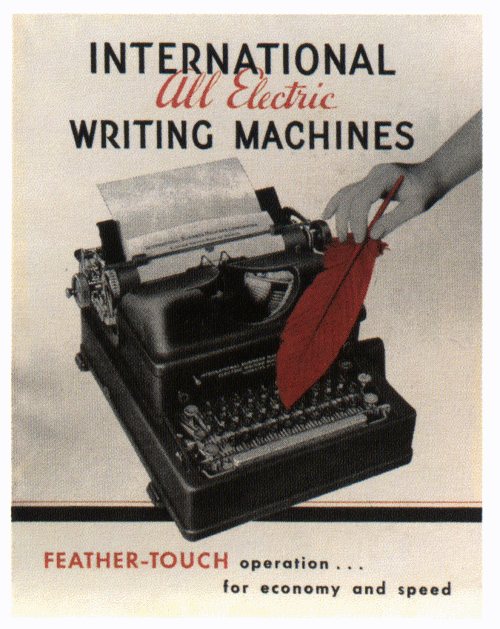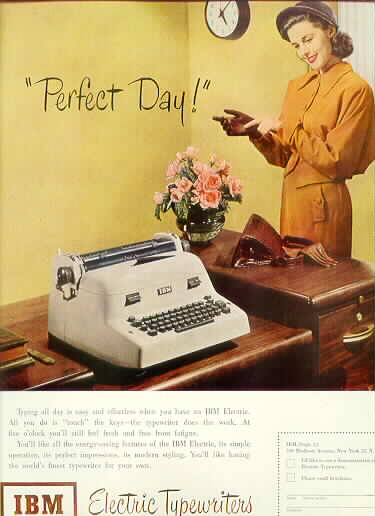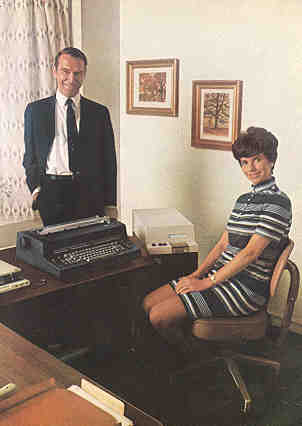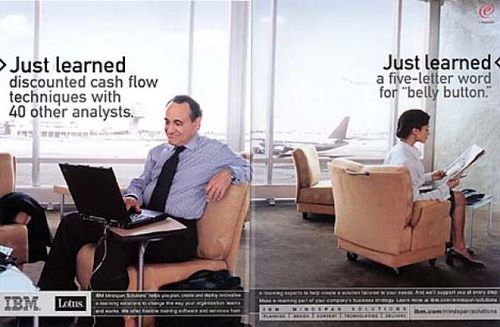
I just saw a note today that the Science Museum has acquired the
very last typewriter produced by the Brother factory:
“The factory’s 200
employees witnessed the final model of the Brother CM-1000 being packed into
its box to a soundtrack of emotional sighs and cheers. This object is the
5,855,533rd of its type to be produced but the only one which has a place in
the Science Museum collection.”
Ah, did anyone shed a tear?
Maybe you should as the typewriter was the instrument that
provided the inception for modern, ubiquitous computing (Charles Babbage et al
aside).
As the Science Museum’s website goes on to say:
“Unlike the telephone
or the automobile, the invention of the typewriter has never received worldwide
acclaim. This may be because the product is one associated with work rather
than social life.”
However, the tabulating and writing machines of the late
nineteenth century formed the backbone of the technology industry that was to
follow.
Today’s large firms, like IBM, trace their histories back to
these simple, yet revolutionary machiens.
For example, “it was
not until 1874 that a typewriter became a commercial success. This was achieved by the inventors
Christopher Sholes and Carlos Glidden, who made an agreement with the Remington
company to have their model, the ‘Type-writer’, manufactured in quantity.”
That company, Remington became Unisys, the last company I worked for.
Unisys vied with IBM to be the biggest mainframe company
back in the 1960s. Back then, Unisys had
a system called Univac, that ran the largest data processing services in the world.
IBM meantime had come from another route: tabulating
machines.
These machines processed numbers, rather than words, and
soon became the alternative route to compute power that competed with Univac,
and many others, through the 1960s.
As we now know, IBM became the leader in this space and
survives through today, whilst the others have not fared quite so well.
But the basic automation of words and numbers is a key to
where we are today, and the classic old typewriter is a wee bit of a loss.
Having said that, I’m still using a typewriter to write this
blog – it’s a personal word processing app that achieves the output – but the
concept is still the same: a keyboard and words automated.
Now then, when will the last keyboard ever be manufactured?
One day soon, given the predominance of voice and touch
screens today.
Meantime, if you like to drown in nostalgia for that classic
old clack,clack, clack, ping machine,
here’s a few ads from the archives of IBM.
1935

1950

1969

I don’t think they would run ads like these anymore.
2001

Chris M Skinner
Chris Skinner is best known as an independent commentator on the financial markets through his blog, TheFinanser.com, as author of the bestselling book Digital Bank, and Chair of the European networking forum the Financial Services Club. He has been voted one of the most influential people in banking by The Financial Brand (as well as one of the best blogs), a FinTech Titan (Next Bank), one of the Fintech Leaders you need to follow (City AM, Deluxe and Jax Finance), as well as one of the Top 40 most influential people in financial technology by the Wall Street Journal's Financial News. To learn more click here...

